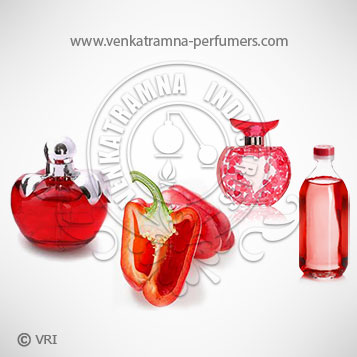
| Botanical Name | Capsicum |
| Common Name | Pepper, paprika, Cayenne pepper, African pepper, Bird pepper, Guinea pepper. |
| Country of Origin | India, China |
| Solubility | Not Applicable |
| Specific Gravity | 0.5300 to 0.7740 |
| Optical Rotation | -2.3 – -11 @ 13°C |
| Refrective Index | Not Applicable |
| PlantPart | Fruit |
| Bland With | Calcium, zinc, magnesium, iron, copper, potassium, boron, manganese, Vitamins C & A (beta carotene), niacin. |
| CAS No | 8023-77-6 |
| Flash Point | 90° C |
| Extraction Method | Steam distillation |
Distilled from the fruit part of the plant, Capsicum Oil is a perennial plant that belongs to the solanaceae family and finds usage as a spice, vegetable & medicine. Also known by the names of Pepper and Chile Pepper, an oleo resin is obtained through solvent extraction method from the fruit part of the plant. The extract has antiseptic, antihemorrhoidal and antirheutmatic properties and is good for digestive, sinus as well as treating stomach conditions.
Their botanical name is capsicum, but by an accident of history they are known as peppers. From their wild origins in the New World, peppers have spread across the globe and are used to enliven food and stimulate palates in climates both hot and cold. From Hungary's paprika added to winter stews to Thai chiles served in steaming noodle soup on a hot and humid canal bank in Bangkok, peppers have found a home in a multitude of cuisines. So ubiquitous is the chile and so jealously claimed by so many cuisines, that many cooks are surprised to find the chile pepper is not native to their region, but an export from America
Color : Dark red liquid.,
Aroma : Characteristic intensely odor
Vitamin C, 0.1 - 1.5% capsaicin, capsicidins.
The extract contains 0.1 - 1.5% capsaicin, a substance that helps in stimulating the circulation and altering temperature regulation. Applied topically, it also helps in desensitizing nerve endings as well as in making a good local anesthetic. As it also contains capsicidins, it has good antibiotic properties.